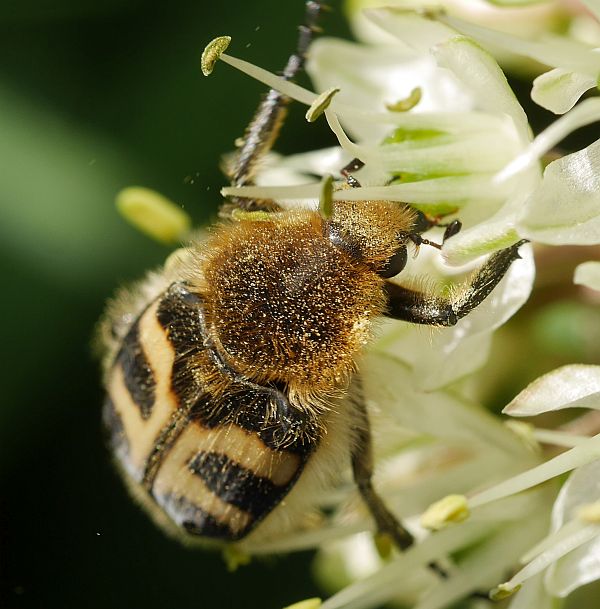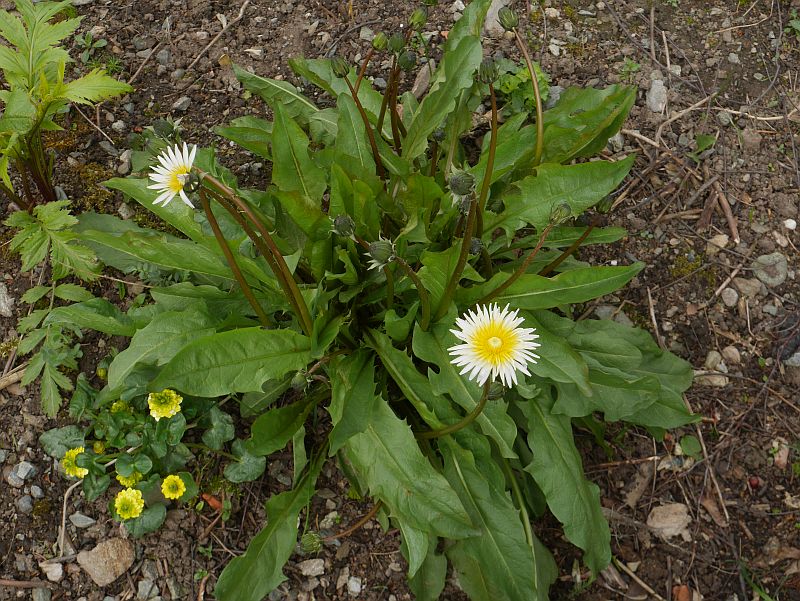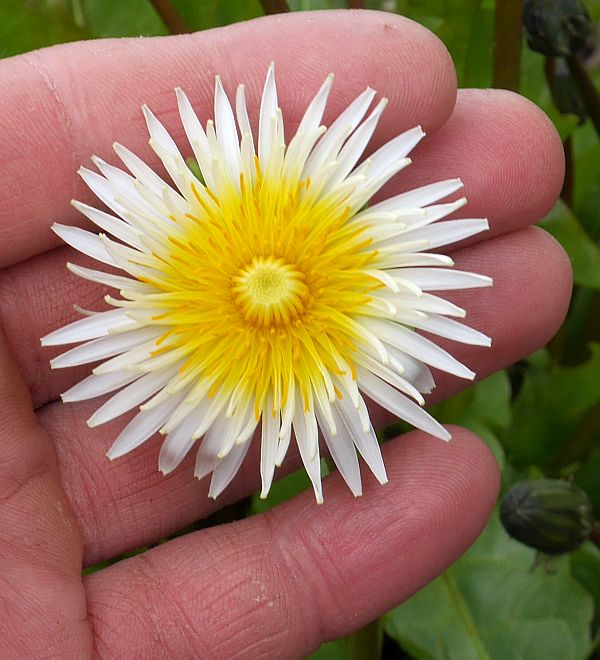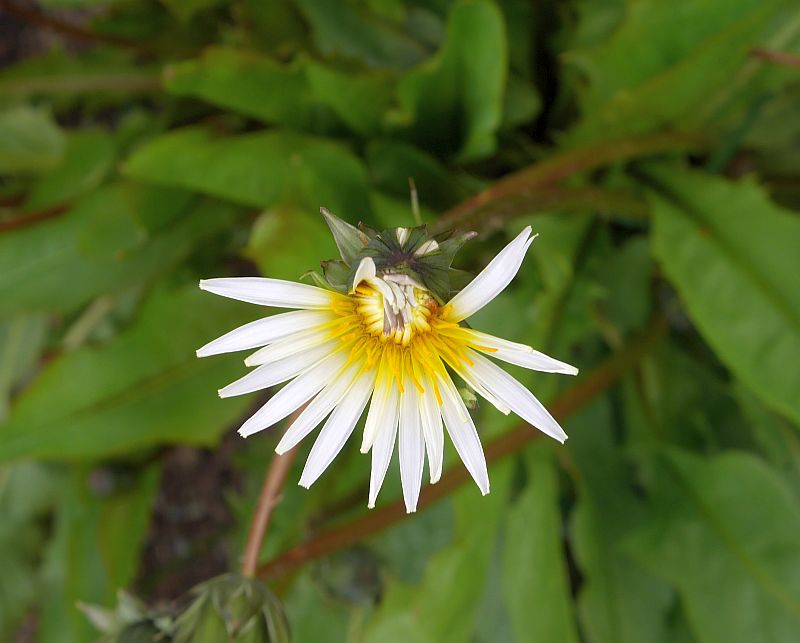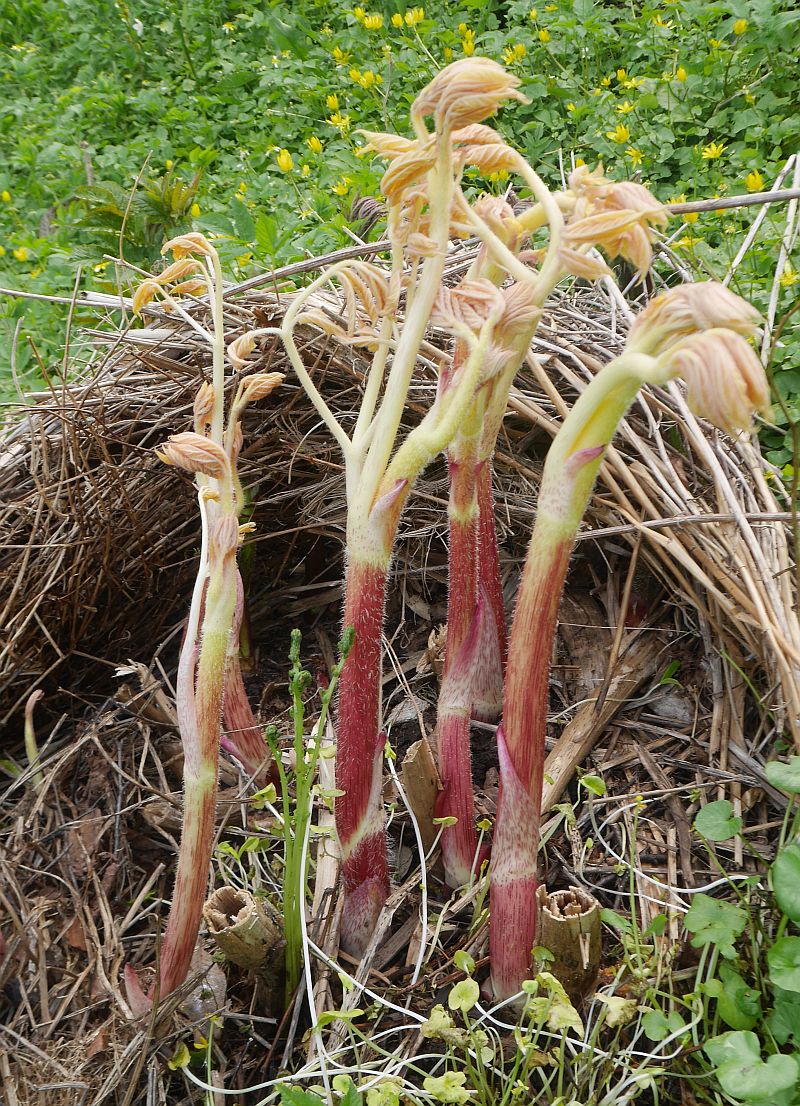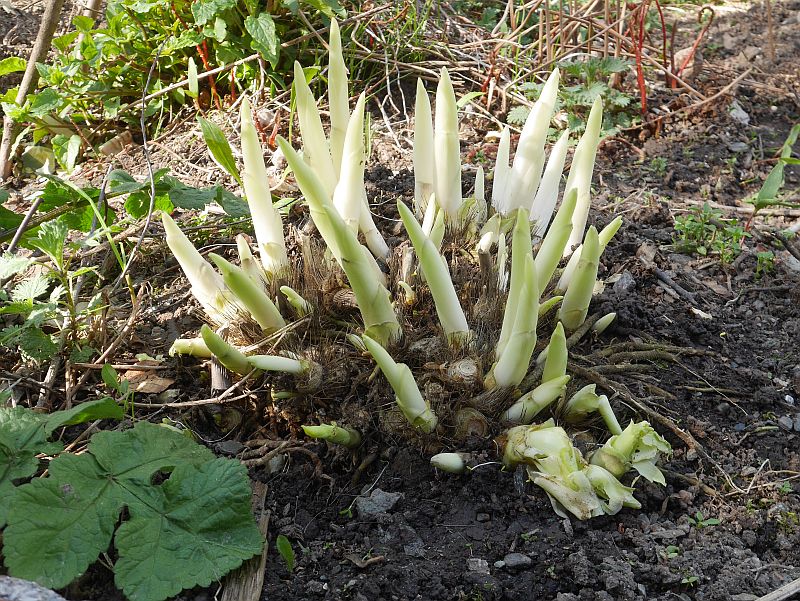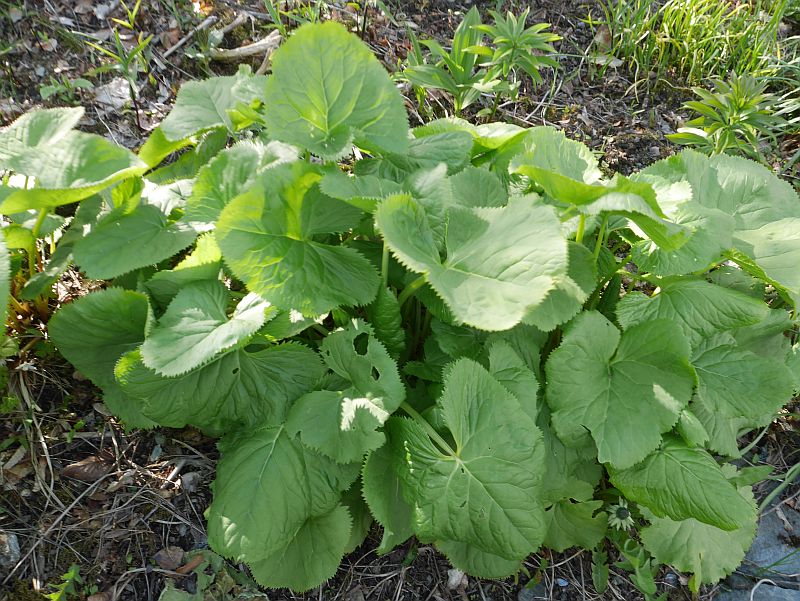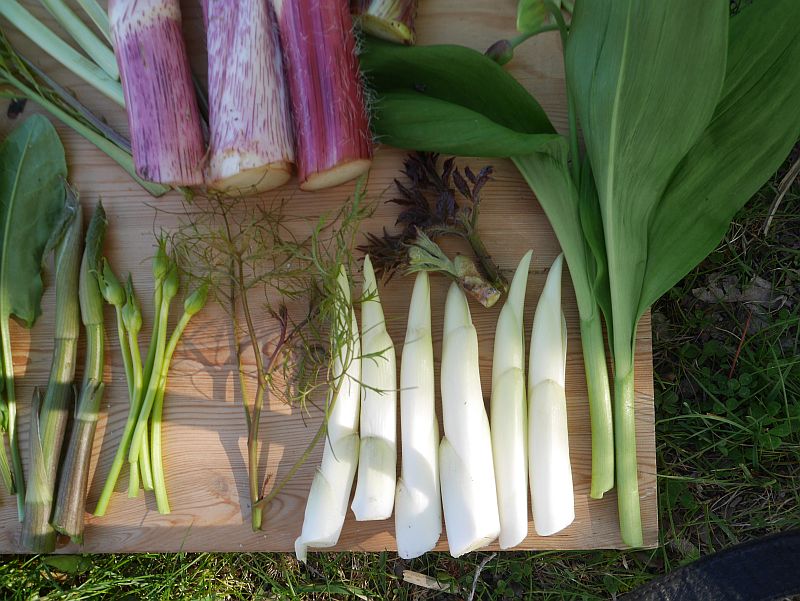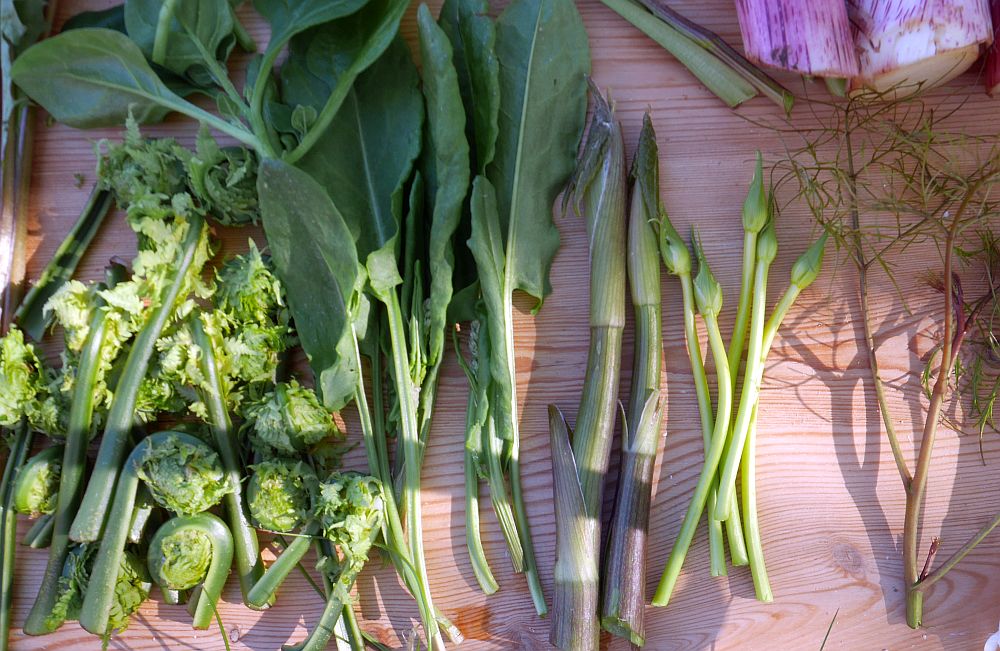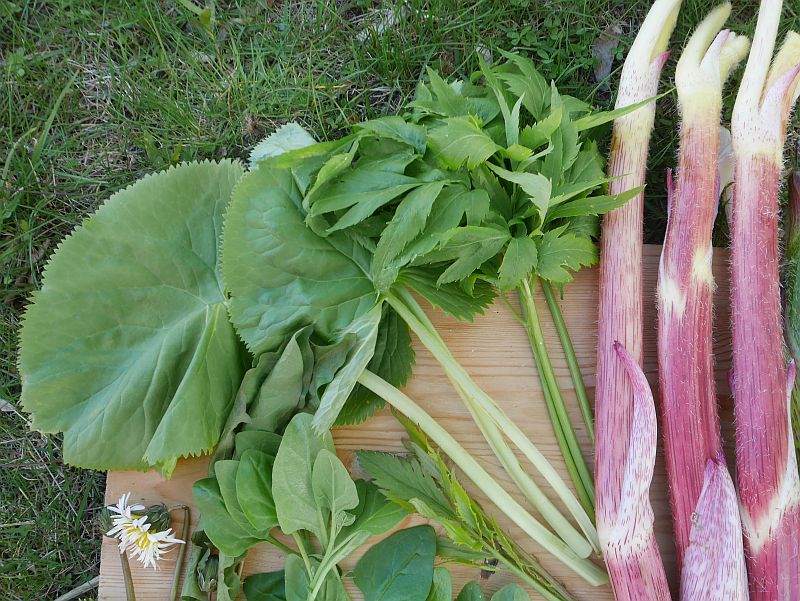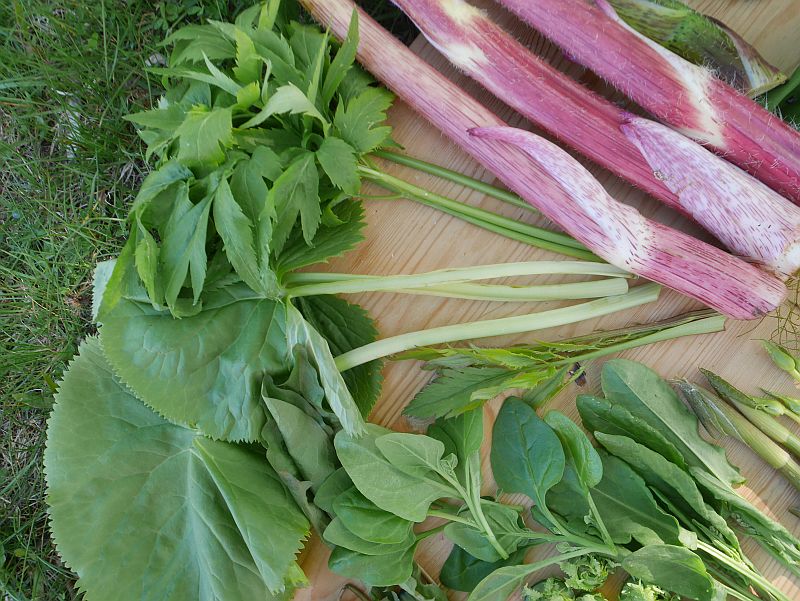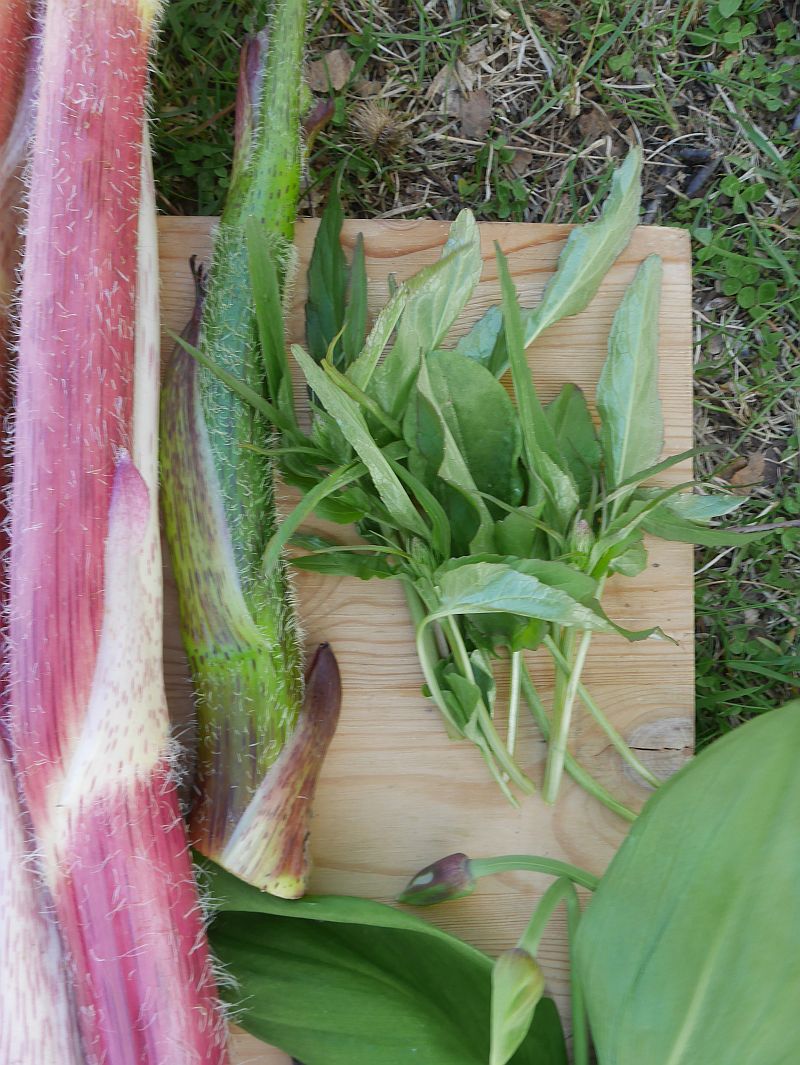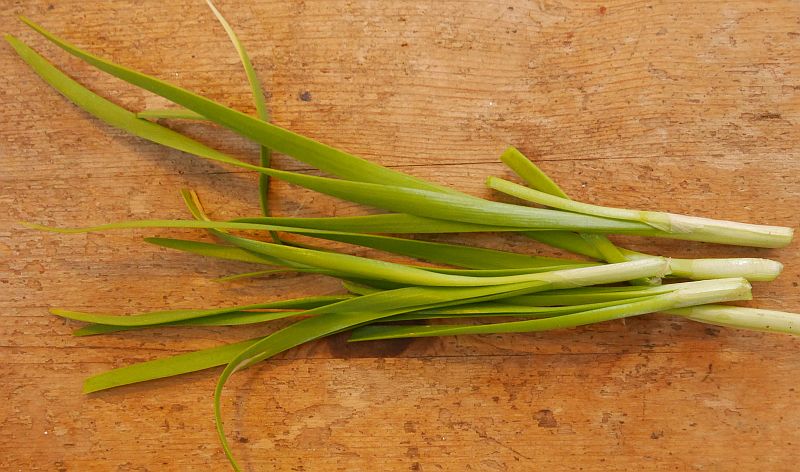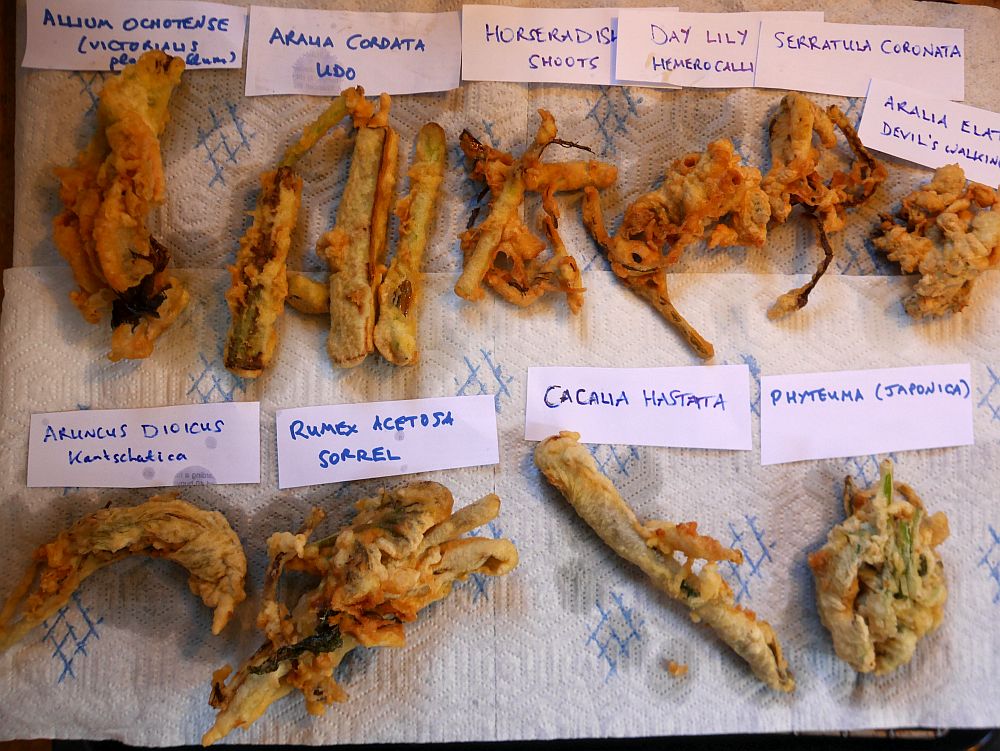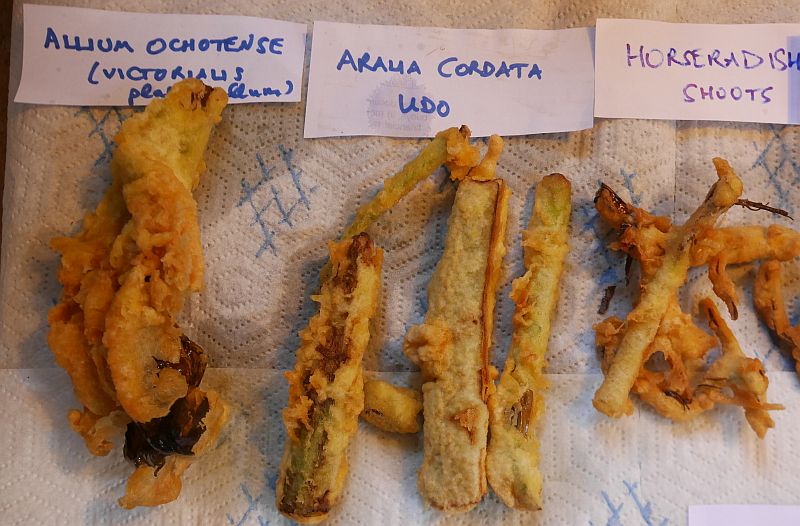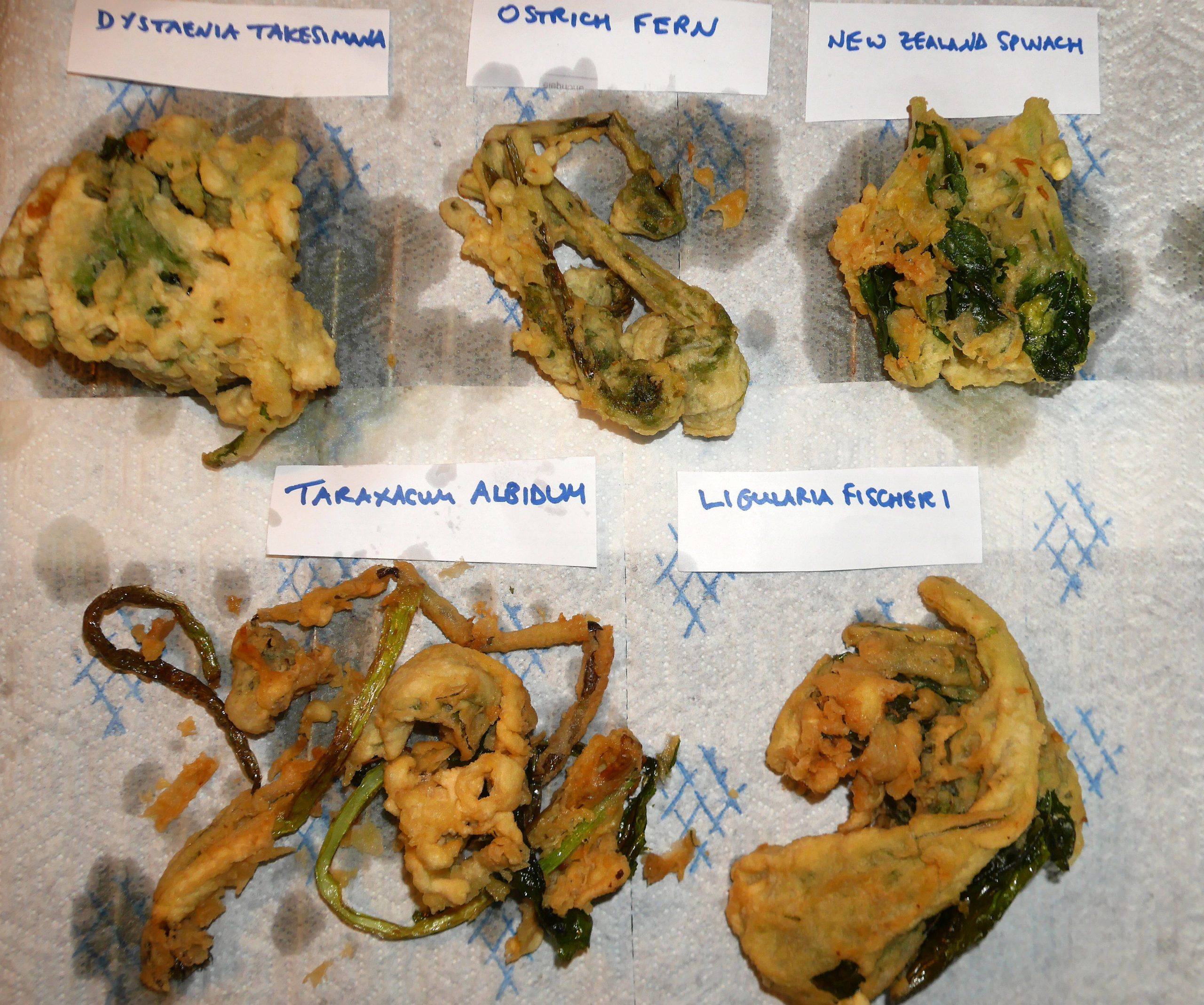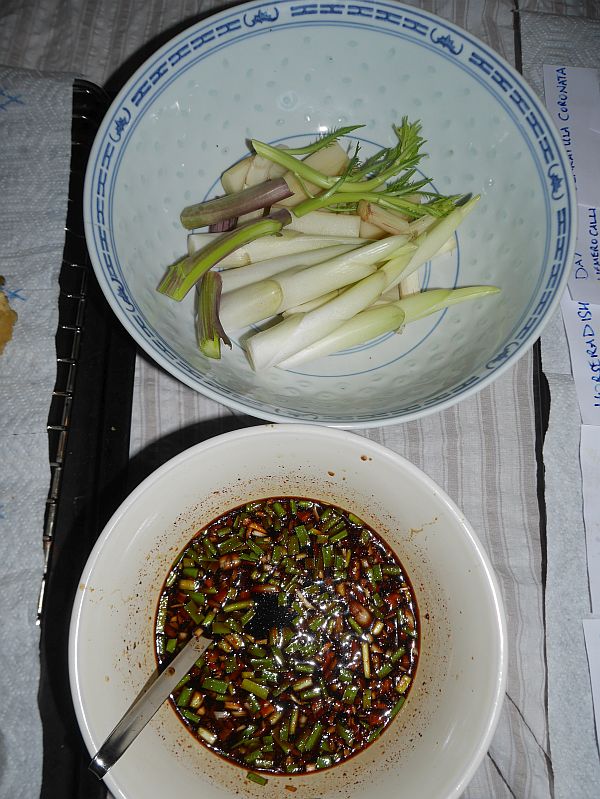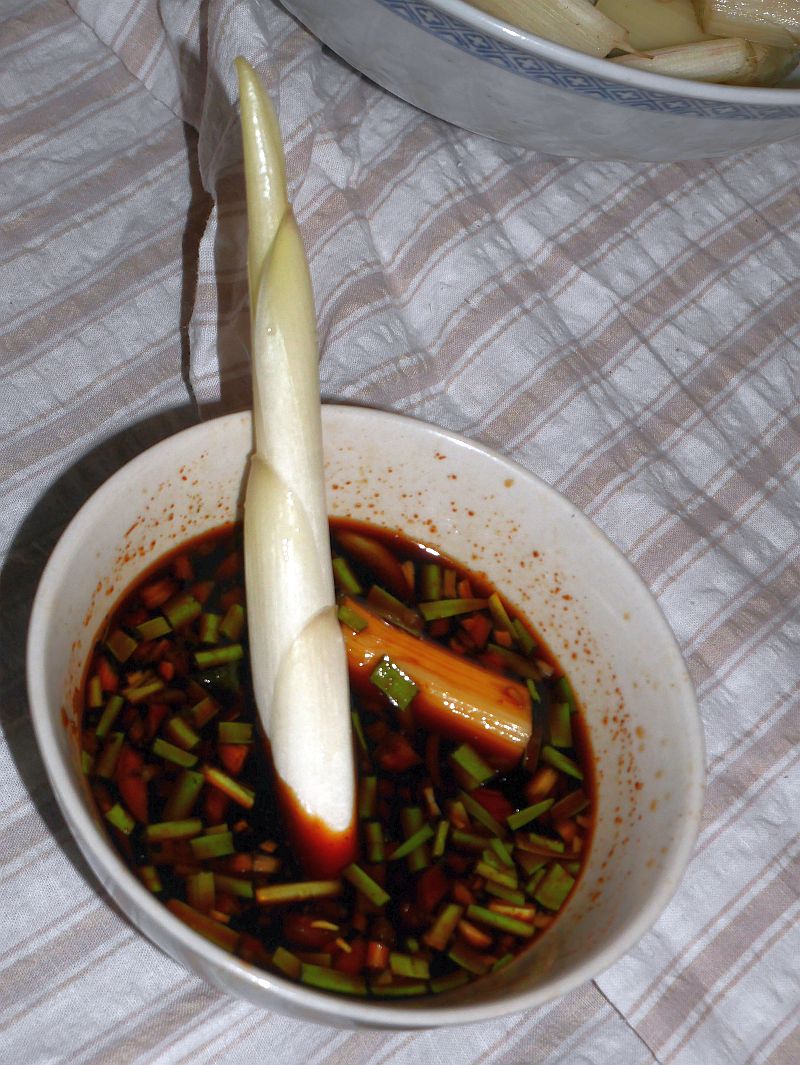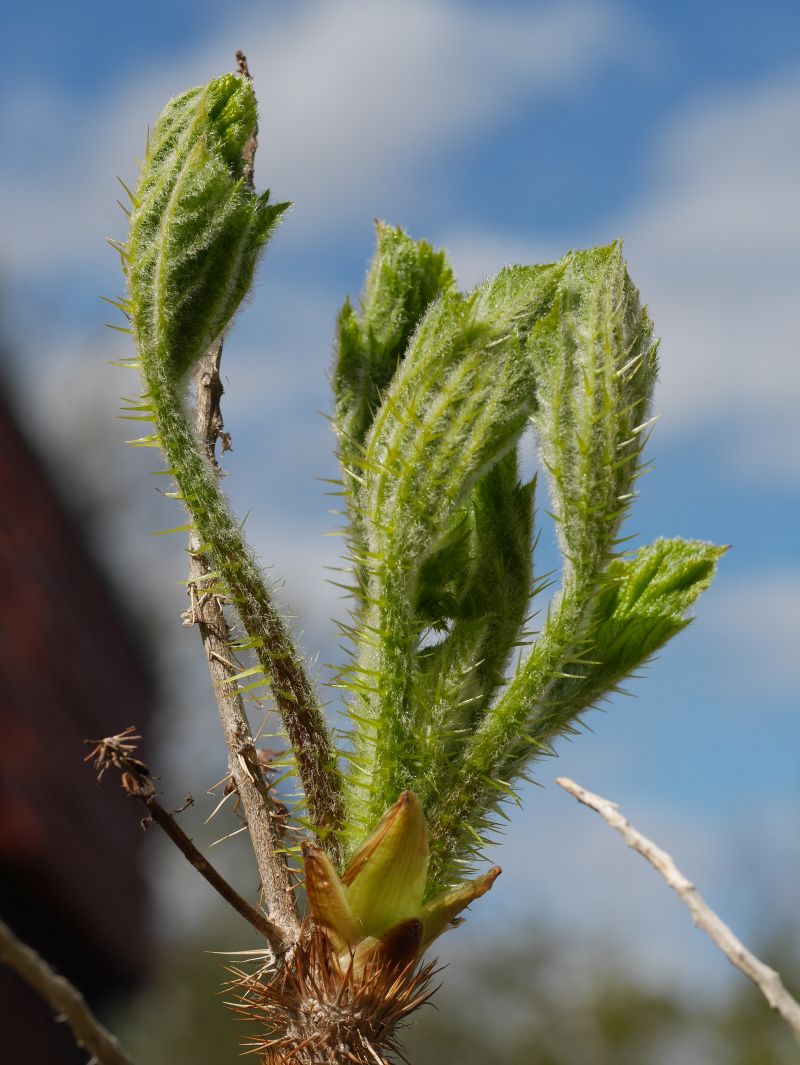One of my favourite insects is the bee beetle / humlebille (Trichius fasciatus). This morning I saw it on one of my favourite onions victory onion / seiersløk (this one is Allium ochotense; the East Asian species – recently separated out as a species). Later I filmed it also on a hogweed (Heracleum spp.).
Tag Archives: Allium victorialis subsp platyphyllum
Korean tempura and dipping sauce for perennial vegetables
AROUND THE WORLD IN THE EDIBLE GARDEN; Part 2 – Korea
Inviting you to the second in a series of dinners from Malvik’s Edible Garden where we “forage” from different parts of the world!
We don’t often eat oily food, but now and again its great and this meal was exceptional!
From top left and clockwise:
Ligularia fischeri
Dystaenia takesimana (Giant Ulleung celery, seombadi)
Aralia cordata (udo) (blanched for dipping and green for tempura)
Phyteuma (should have been japonica, but I used nigra; svartvadderot)
Allium victorialis subsp platyphyllum (victory onion; seiersløk)
Aralia elata (devil’s walking stick, fandens spaserstokk)
Hosta “Frances Williams”
Hemerocallis dumortieri (flower shoots) (dayliliy, daglilje)
Parasenecio hastatus (also the first time I ate this one and it was delicious, but I wouldn’t advise eating a lot: see here http://www.edimentals.com/blog/?p=23845)
Matteuccia struthiopteris “Jumbo” (ostrich fern; strutseving)
Taraxacum albidum and to the right of this:
New Zealand spinach and
Serratula coronata (also a first for me; the subspecies insularis is eaten in the Far East)
Oplopanax horridus (North American species substituting Asian species Oplopanax japonicus or Oplopanax elatus)
More information with the pictures!
Earliness and diversity in Victory Onion
Victory onion or seiersløk (Allium victorialis) in Norwegian has one of the most widespread geographic distributions in the Allium genus from the Pyrenees to the Far East. In Norway, it’s naturalised in the Lofoten Islands, a few places in Nordland county and one location in Hardanger (Granvin). There is evidence to believe that it was originally introduced to Norway by the Vikings. I have plants from different parts of its range in my garden and there is a large difference between them as to when they begin to shoot in the spring, the ones deriving from Japan leafing out a few weeks earlier than the ones from Europe and Norway, although a plant received as Allium ochotense (nowadays considered by most as a synonym of A. victorialis), which originated in the Tromsø botanical garden, is probably from the Russian Far East and is also a late variety. Below are pictures of most of my plants taken on 19th and 20th April 2020. I have about 5 other accessions, two not big enough to photograph, one from the Kola peninsular has not grown well and will be moved to a new location, 3 more were planted this spring. two donated by the Oslo botanical garden and one a variegated form from Japan: Allium victorialis subsp. platyphyllum ‘Chiri Fu’.
1) From a seed trade with Iku Kubota in Japan in 2002.
2) From Tei Kobayashi in Japan in 2016 (subsp. platyphyllum or broad-leaved victory onion) has a flower bud extending
3) From seed from the Reykjavik botanical garden in 2009, originatin from the Sakhalin in the Russian Far East. This one also has a flower bud and has broadish leaves.
4) Received from the Tromsø botanical garden in 2002
5) From Granvin in Norway in 2012
6) From Merete in Lofoten in 2003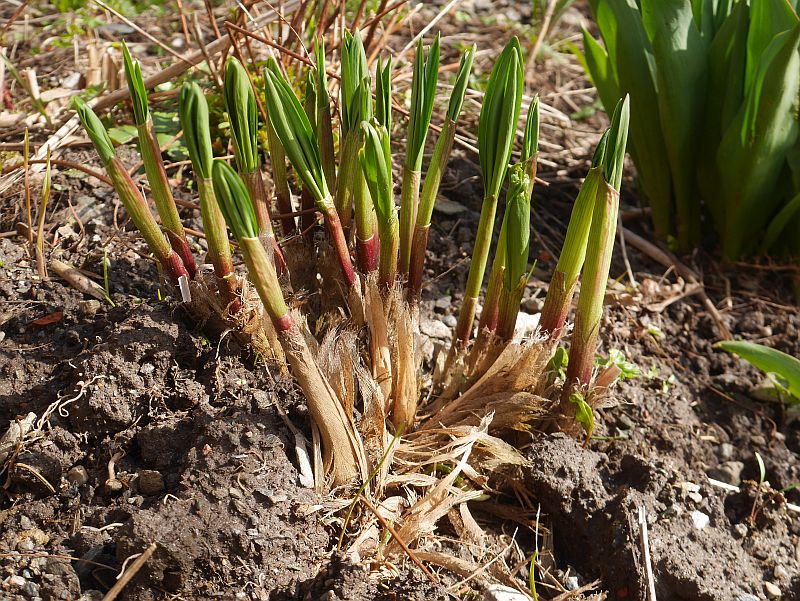
7) From Anja Angelsen. Krogtoft, Vestvågøy, Lofoten, Norway (2009)
8) From Massif Central in the French Alps (kindly sent to me by the Haut-Chitelet alpine garden in 2013) 
9) From naturalised plants in Hopen, Nordland, Norway in 2013 10) Probably Allium victorialis Cantabrica AMH 7827 (collected by Antoine Michael Hoog, the son of one of the founders from Van Tubergen); I received it as Cantabria in 2008.
10) Probably Allium victorialis Cantabrica AMH 7827 (collected by Antoine Michael Hoog, the son of one of the founders from Van Tubergen); I received it as Cantabria in 2008.

